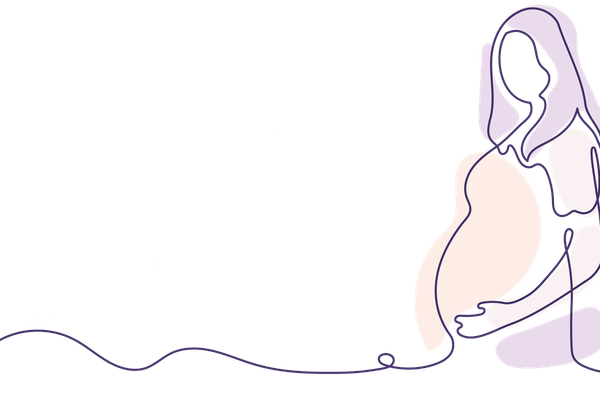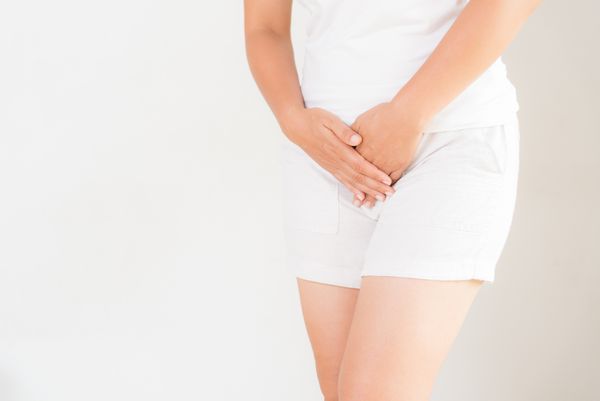Reviewed by Melissa Nassaney.
Urinary incontinence (UI) is often viewed as an unavoidable part of aging, something women must simply learn to tolerate as they get older. In truth, though aging contributes to UI, the condition is not inevitable and is actually quite treatable.
UI can be very distressing and unpredictable and have a significant effect on a person's quality of life at home, at work or out in the community. Many women who experience issues with leakage feel embarrassed, so they don't discuss the issue with their doctor. We recently spoke with Melissa Nassaney, DPT, a physical therapist who specializes in pelvic health and a member of HealthyWomen's Women's Health Advisory Council, to learn what we should know about this often misunderstood and unnecessarily tolerated condition.
What is urinary incontinence?
The basic definition of UI is the involuntary loss of urine. The urinary system is complex, but in the simplest terms, the bladder stores the urine, and the sphincters, which are muscles that surround the urethra, hold back urine. The pelvic floor muscles support the urethra, the bladder and other pelvic organs. If any part of that system is not doing its job effectively, UI is more likely to occur.
What are the symptoms of UI?
The main symptom of UI is unexpected leakage of urine. This leakage can happen in different ways for different women. Some women will experience only drips of urine during an activity while others may feel a total loss of urine after a strong urge to pee.
What are the types of UI?
The most common three types of UI are:
- Stress incontinence: Urinary leakage that occurs when the bladder takes on an increase in pressure or "stress" from the abdominal area when laughing, coughing, sneezing, lifting something heavy, exercising, and sometimes with older women, moving from sitting to standing. When this abdominal pressure pushes down on the bladder and its opening, the muscles around the opening and the urethra need to meet and overcome that pressure in order for us to not leak. When the muscles are too slow or too weak to close the urethral passage completely, leakage occurs.
- Urge incontinence: Urinary loss that occurs after an involuntary contraction of the bladder muscle causes a sudden urge to urinate. The sphincters and pelvic muscles think they need to empty, and the brain tries to counteract that if you're not in the right place and time. If our sphincters and muscles don't respond quickly enough, we can have leakage. Some women's urge is extremely strong and simply too difficult to overcome. Urge incontinence is commonly associated with triggers like hearing water running; inserting the key into your door after returning home; or consuming alcohol, caffeine or other known bladder irritants.
- Mixture of stress and urge incontinence: Some women experience symptoms of both types of UI.
Are women more prone to UI than men?
Yes, women are more prone to UI than men for several reasons:
- Anatomical differences: Women's urethras (3-4 cm) are much shorter than men's (18-20 cm), and the bladder neck in a male is supported by the prostate. In women, the sphincter muscles tend to be thinner and smaller, which means any damage to the urethra or sphincter (like during vaginal childbirth) is more likely to cause UI. The pelvic floor muscle layers also vary in thickness with female muscles being on the thinner side.
- Perimenopausal and menopausal hormone changes: Women generally experience a decrease in estrogen and progesterone during this stage of life. Aside from hot flashes, insomnia and fatigue of menopause, these hormonal changes can contribute to symptoms of urinary urgency, frequency, urge incontinence and nocturia (frequent nighttime urination). Estrogen plays an important role in keeping our muscles well-toned. Declining estrogen levels means thinning of the vaginal and urethral lining and atrophy of the pelvic floor muscles. All of these factors can impact muscle performance and pelvic organ support including the urethra and bladder neck resulting in leakage.
- Past pregnancies: The more pregnancies, the greater risk a woman has to develop UI, regardless of how the baby is delivered. The risk increases with vaginal delivery, which can stretch or injure muscles, nerves or supportive connective tissue, or when forceps are used to assist in the delivery.
How is UI diagnosed?
UI is diagnosed through a comprehensive assessment that includes patient history, a physical exam and noninvasive diagnostic tests like a urinalysis or ultrasound which can help the doctor identify what type of UI is present.
Some doctors may ask patients to keep a bladder diary and refer them to pelvic floor rehabilitation for treatment. If initial methods don't improve symptoms, more complicated tests, called urodynamic studies, may be done.
What are the risk factors and/or causes of UI?
There are several risk factors for UI, which include:
- Age
- Pregnancy
- Family history
- Abdominal or pelvic surgery
- Weight gain
- Medications
- Cognitive impairments
- Presence of other pelvic floor disorders such as prolapse or constipation
- Frequent urinary tract infections (UTIs)
Is UI inevitable as we age?
No, though UI is often seen as inevitable, this simply isn't true. As we get older, we are more susceptible to UI because of decreases in estrogen and collagen, and atrophy of our pelvic floor muscles, but age is only one contributing factor. There are many other factors, and some women never experience UI.
For those that do, UI is very often treatable. Today, we not only know there is something that can be done about UI but also should be done. "We should do something about it because there's a cost associated with it," Nassaney said. There is an emotional cost, especially when people are traumatized by experiencing leakage in public. There is also a physical health cost since many women will avoid exercise for fear of leakage, and there is a financial cost purchasing personal continence products.
How is UI treated?
There are multiple treatment options for UI. Often multidisciplinary care can include urologists, gynecologists, nurse specialists, pelvic floor therapists and urogynecologists. The first line of defense in the treatment of UI is typically very conservative and involves pelvic floor therapy (PFT), which incorporates strategies for behavior modifications, bladder training, pelvic floor muscle strengthening (aka Kegels), and education — teaching the patient about their anatomy and what's causing leakage. "For somebody to understand why they're leaking … and what's happening to them physically is a huge help to understanding how to control it," Nassaney said. Therapists also figure out whether a patient's pelvic floor muscles are underactive or overactive, which determines the type of exercises to start with.
When PFT doesn't produce optimal results, a doctor may do further testing and offer other treatment options such as:
- Medication (for urge and mixed incontinence only)
- Low-dose vaginal estrogen
- Incontinence pessaries
- Weight loss programs
- Electrical stimulation
- Percutaneous Tibial Nerve Stimulation
- Botox injections into the bladder muscle
- Surgery
Does having UI put me at greater risk for cancer or other conditions?
No, UI does not put you at risk for any other disease. It is possible for stress incontinence to lead to urge incontinence.
How can UI impact my sexual health?
Many women with UI may be too afraid to exercise for fear of leakage. Lack of exercise may lead to atrophy or weakening of the pelvic muscles that help women feel pleasure and achieve orgasm, so UI can negatively impact our sexual satisfaction. In the same way, women may fear leaking during sex, which can make them less comfortable and less satisfied during intimacy.
Is UI related to overactive bladder? If so, how?
Urge incontinence is often used interchangeably with overactive bladder. However, they're not the same. Overactive bladder is a frequent urge to urinate but does not necessarily involve leakage. The distinction is complicated because those with UI can almost teach their brains to respond early to the urge to urinate. A woman who is fearful of leakage, may constantly visit the bathroom and empty her bladder before it is full, teaching her body that she needs to go sooner. Eventually, this can create a frequent urge to urinate, which is the basic definition of overactive bladder.
How can women improve their UI?
Talk with your medical provider about your symptoms and ask for recommendations for treatment options. Exercise can help in many cases; however, it's helpful to be evaluated by someone who can help you work the muscle properly and effectively.
- Living With Incontinence, Without Shame - HealthyWomen ›
- How to Know if You Have Urinary Incontinence - HealthyWomen ›
- What Is Botox Used For? - HealthyWomen ›
- FAQs About Bladder Leakage - HealthyWomen ›
- Urinary Incontinence Can Feel Like a Full-Time Job - HealthyWomen ›
- Did You Know There Are Different Types of Bladder Leakage? - HealthyWomen ›
- Urinary Incontinence During Pregnancy and After Pregnancy - HealthyWomen ›
- After Postpartum Bladder Leakage, I Was Able to Treat It - HealthyWomen ›
- Bladder Leakage During Sex - HealthyWomen ›
- Menopause and Bladder Leakage - HealthyWomen ›
- ¿Sabías que hay varios tipos de filtraciones de la vejiga? - HealthyWomen ›






